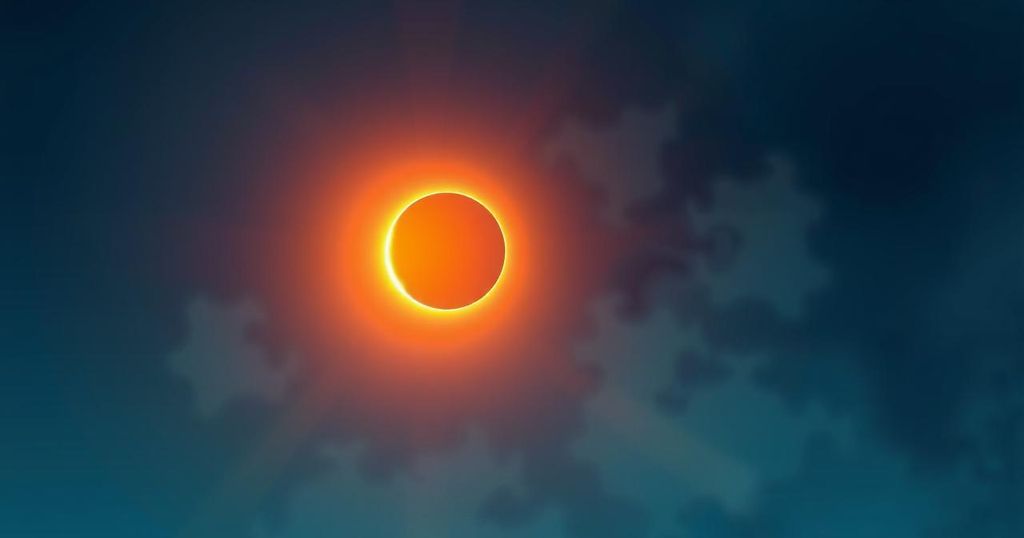Comprehensive Guide to the Solar Eclipse on March 29: Viewing and Safety Tips

On March 29, a partial solar eclipse will take place, visible in select regions. Unfortunately, it will not be visible in India, although live streaming options will be available. Observers should prioritize safety by using adequate solar viewing glasses or handheld solar viewers to prevent eye damage during the eclipse.
On March 29, the year’s first solar eclipse will occur, generating interest across numerous regions, including parts of North America, Europe, Africa, and northern Asia. This celestial event arises when the Moon obscures the Sun from view, either partially or completely.
During this occurrence, only a partial solar eclipse will be visible, as the Sun, Earth, and Moon will not align perfectly. Thus, according to NASA, totality, where the Sun is completely blocked, will not happen this time, although shadows will be cast over various regions in the northern hemisphere.
In India, the partial solar eclipse will not be visible. It is recommended that individuals in India view the event via live streaming on multiple online platforms instead.
The timing of the eclipse varies based on geographical location; those in the Americas will generally see it during sunrise, while those in western Europe and northwestern Africa will observe it mid to late morning. For eastern Europe and northern Asia, the occurrence will be noted in the afternoon or early evening. Indian Standard Time indicates the eclipse will start at 2:20:43 pm, peak at 4:17:27 pm, and conclude at 6:13:45 pm, as reported by the Indian Express.
Safety precautions are essential when observing the solar eclipse. Directly viewing the Sun can cause harm to the eyes; thus, it is imperative to utilize safe solar viewing glasses, often referred to as eclipse glasses. Handheld solar viewers are also viable options. Regular sunglasses should not be employed for this purpose.
Even with proper protective eyewear, viewing through other optical devices such as cameras, telescopes, or binoculars remains dangerous, as concentrated solar rays can damage the safety filter and result in severe eye injuries. Utilizing a special-purpose solar filter with optical devices is the recommended method for safe viewing of the eclipse.
The solar eclipse occurring on March 29 will primarily be a partial eclipse, not visible in India but watchable via live streaming. Individuals in various geographic locations should adhere to safety precautions, ensuring proper eyewear is utilized to prevent eye injury. As the phenomenon unfolds at specific times worldwide, one must remain aware of local timings and viewing methods to appreciate this celestial event safely.
Original Source: www.hindustantimes.com







